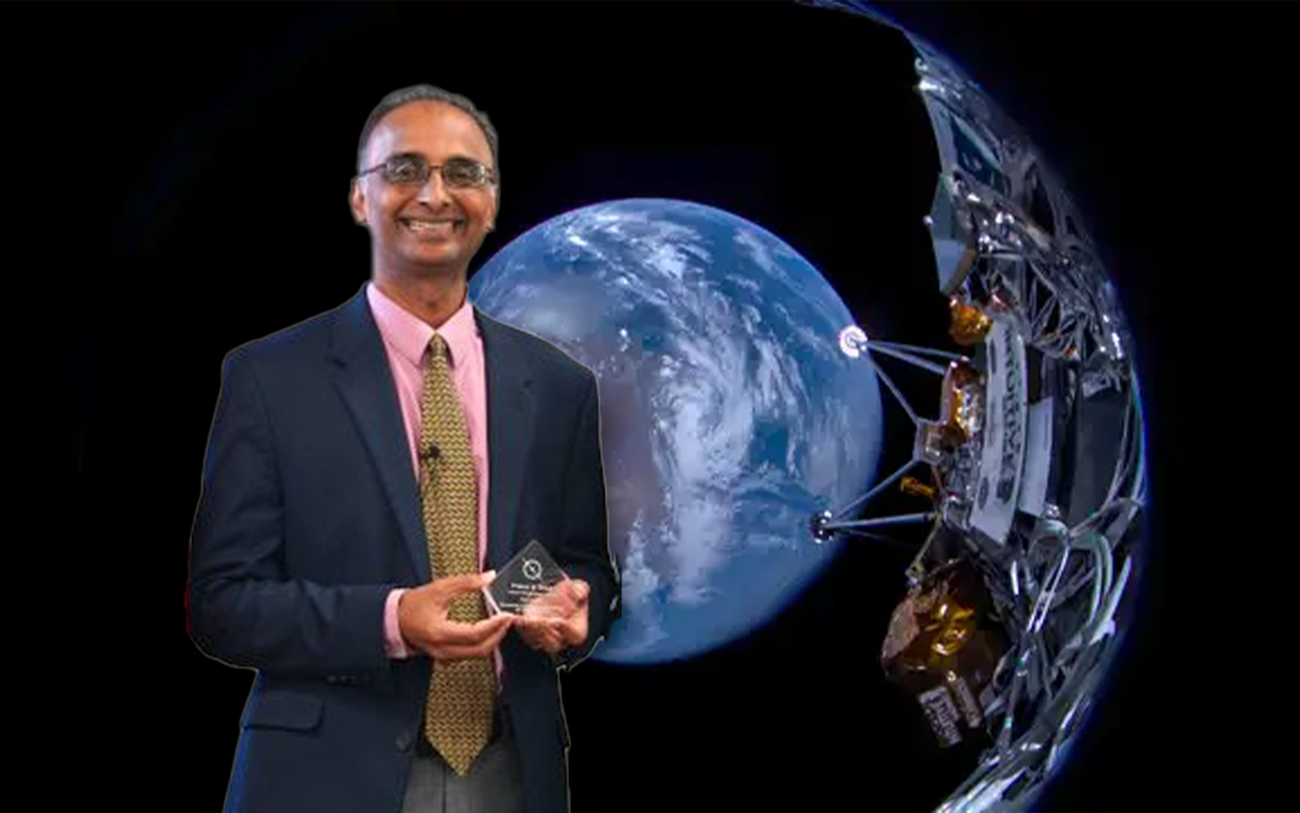
Indian American engineer Prasun Desai, deputy associate administrator of Space Technology Mission Directorate at NASA Headquarters, is part of the team that worked on the Odysseus lander’s historic soft moon landing. Odysseus, also known as “Odie,” is designed and operated by the Houston-based Intuitive Machines. It reached the surface of the moon yesterday, becoming the first privately developed spacecraft to touch down on the moon and the first American spacecraft to do so in more than half a century. “With the last-minute assistance of a NASA precision landing technology, the first CLPS, or Commercial Lunar Payload Services, mission carrying the agency’s science and technology demonstrations successfully landed on the moon at 6:23 p.m. on Feb. 22,” the space agency announced.
The landing was delayed by two hours to perform an additional orbit of the moon. The company said that it determined that “laser rangefinders on the lander, a key instrument to enable a precise landing, were not working properly,” SpaceNews reported. The controllers had to upload a software patch to enable the lander to instead use a NASA Doppler lidar payload originally intended to be a technology demonstration, the report explained.
“We weren’t planning to use it in line with the actual mission coming down to the landing, but now we are,” Desai said during NASA’s livestream of the moon landing. “He described the payload as “the primary system to help provide the velocity and altitude information.
During a televised news conference on the landing today, he confirmed that “most of the payloads, or scientific instruments, on lunar lander have already provided good data and are working properly.”
According to NASA, the Intuitive Machines mission was carried out as part of that program, known as the Commercial Lunar Payload Services program, or CLPS. NASA awarded Intuitive Machines a $118 million contract to carry six instruments to the lunar surface that would help pave the way for future missions under its Artemis program, which seeks to return astronauts to the moon as early as 2026.
According to SpaceNews, the IM-1 mission carried six NASA payloads through the agency’s Commercial Lunar Payload Services (CLPS) program, under a task order awarded in 2019 and valued, after revisions, at $118 million. The payloads emphasized technology demonstrations, including a navigation Doppler lidar, a navigation beacon, a radiofrequency fuel tank gauge and a camera to study dust plumes kicked up by the lander’s engine. Other NASA payloads included a laser retroreflector and a radioastronomy instrument.
Desai has worked at NASA for 33 years. For the past 13 years, “he has helped to establish the Space Technology Mission Directorate from inception at NASA Headquarters for development of next-generation space technologies and capabilities,” his NASA profile says. Before that, he spent 20 years at NASA Langley Research Center as a senior systems engineer. He has “contributed to the design, development, analyses, and flight operations of many NASA missions (Mars Exploration Rover, Stardust, Genesis, Mars Phoenix Lander) pertaining to entry, descent, and landing of probes at Mars and Earth.”
As deputy associate administrator of the Space Technology Mission Directorate, he supports executive leadership, overall strategic planning and direction, and effective management for all elements of the Space Technology Programs. He helps plan, direct, coordinate, and evaluate the full range of Space Technology programs and activities, and supports the development of overall NASA planning, policy development, and program integration activities.
He has received numerous awards from NASA for his contributions, including two Exceptional Engineering Achievement medals; an Exceptional Achievement medal, Outstanding Leadership Medal; a Presidential Rank Award; and an Exceptional Service Medal for his significant contributions throughout his NASA career. He also received the 2005 National Engineer of the Year Award from American Institute of Aeronautics and Astronautics (AIAA).
He has a B.S. in Mechanical Engineering from Rutgers University, an M.S. in Astronautics from the George Washington University, and a Ph.D. in Aerospace Engineering from the University of Illinois. He is an Associate Fellow of the American Institute of Aeronautics and Astronautics, and has authored or co-authored over 60 technical publications.
A prolific speaker, he gets invited to various venue to promote science education and science literacy and to motive students for careers in math and science. He was the NASA Langley Research Center’s “Speaker of the Year” in 2008, 2009, 2011, and was inducted in the NASA Langley Speaker Hall of Fame in 2012.
Source : americankahani
